Summary (TL,DR):
This scope is astonishingly good value for the money. It has excellent build quality, very good IQ, huge range, a useful reticle, good tracking and nice operational feel, it also comes with some nice accessories included. Its flaws include weight, slightly off windage adjustment, slightly off reticle scale.
Introduction
T-eagle is a Chinese brand. I came across it when browsing Aliexpress. It appears that Aliexpress is the only place you can buy this brand of scope outside of China. It is very odd considering China has a complete projectile weapon ban, including moderately powered bb guns.
The IMAX HD 2-16x44 is T-eagle's flagship product. It sports a huge 8x zoom range, it has 1 ED glass at the front. see specs below.
This scope currently retails about $440 NZD inc shipping on Aliexpress. It comes with a cleaning cloth, flip aluma caps front and back, and a sunshade. The front Aluma cap can be mounted on the scope directly or on the sunshade.
Mr Yang, the owner of T-eagle, was very generous. After I told him that I could not find any reviews on the internet he sent me this scope to test. I feel very bad for being so busy over the last few months and not having completed this review earlier. Anyway now it is done, I hope everyone can enjoy this review.
Image Quality
Image quality is probably what you guys are most interested in. So was I. I do not own any top end German or Japanese scope. I own a Bushnell Elite 6500 4.5-30 (Japanese), Leupold VX-3 6.5-20x40 AO EFR (USA), and Leupold VX-2 6-18x40 AO (USA). The VX-3 has the best image quality of the lot. For a long time this VX3 was (and probably still is) the scope of choice for indoor 25 meter sporting rifle shooters and rimfire metallic silhouette shooters.
I compared the IMAX HD against the VX-3. I made a piece of gear that allowed me to mount 3 scopes side by side. I mounted the scopes on this thing and then mounted this thing on a camera tripod. I would switch between them when looking through, I was able to compare them by looking at the same target object/scene. I dialed them to the same magnification from 6.5 to 16.
After looking through them both, and looking at various different scenes and targets, and at different distances, below is my observation:
* In terms of overall image quality, The IMAX HD's is very close to the VX-3.
* in terms of resolution, VX-3 has an edge, but not a big one. But this is expected comparing a $1400 dollar 3x zoom scope with a $440 8x zoom scope.
* IMAX HD's objective lens is only 10% larger than VX-3, but its image is significantly brighter. my estimate is between 50-80% brighter. whereas in theory it should only be about 21% brighter.
* IMAX HD's image appear a little whiter when your eye is not perfectly aligned. This is not brighter, it is more like a slightly "washed out" sort of effect. Whereas most scopes tend to be darker when your eye is not perfectly aligned. It does not really affect use and I may made it sound worse than it actually is. In actual shooting it never bothered me. In fact it is hard to notice when you shoot. It was only apparent when I was comparing the scopes back to back.
* Chromatic Aberration is well controlled, I have looked through both scopes under bright conditions and did not notice much CA.
I also looked through the IMAX HD on its own between 2x-6x, I do not usually use this range for shooting, but I thought it was very clear. At 2x there is a hint of barrel distortion, but it is only noticeable if you look for it. I do not think it would affect actual use. For what its worth, all Mainstream mid-high end camera lenses with this level of zoom would have naked-eye detectable barrel distortions too.
Overall, I find IMAX HD's image quality to be very good. If you take into account its price, it is astonishingly good.
The majority of my shooting is 25 metres free hand shooting (no sling/bipod/any other support). I shoot kneeling and standing mostly. my kneeling target is 50 roundels on a A4 paper. Each roundel is 24mm in diameter, with a 11mm smaller roundel inside. If I hit within the smaller roundel I consider it a good shot. I felt that I got more good shots with the IMAX HD than I did using the VX-3. I cannot quite explain why.
Tracking and Reticle
I wrote a guide on how to do a scope tracking test without having to fire a shot. I obviously followed my own guide. I draw a 15cm x 15 cm square on a cardboard box, then draw a line at every 5cm, I ended up with 3 x 3 smaller squares, each being 5cm wide and tall.
I mounted laser next to the scope, and had them mounted on a camera tripod. I dialed the laser to point to the POA of the scope (centre of the reticle).
Now it is time for some math. The scope is 1/4 MOA per click. 1 MOA is 28mm at 100 metres, which is 7mm at 25 metres. My testing distance is 25 metres, that makes every 4 clicks 7mm. At 25 metres, to move the POA/POI by 49mm, it would take 28 clicks, to move it by 147 mm, it would take 84 clicks, to move it by 150 mm, it would take 86 clicks.
I turned the elevation up by 86 clicks, checked the POA by lighting up the laser, it was bang on at 15cm below the POI (the laser dot). Excellent!
I then turned the windage right by 86 clicks, checked POA again. It should now be at the opposite edge of the big square, being 15cm up and 15 cm to the right... But it was not. Elevation wise it was still accurate at 15cm above (which is a relief), but windage wise it was slightly too far out. I will explain just how far too far further below.
I then turned the elevation down by 86 clicks, checked the POA, it was now level with POI. Excellent!
I then turned the windage left by 86 clicks, check POA, it came back to where it started. So basically a full box test, showing the turrets are repeatable.
I then did a reverse box test - left, down, right, up. The result mirrored the first box test.
The click is audible and can be felt. It is mushier than the VX3, but still very usable. Each revolution is 15 MOA, or 60 clicks. Unfortunately there are no revolution markings to tell you how many full rounds you have turned (I am sure there is a proper term for this but it escapes me). You will have to remember how many revs you turned by heart. Another minor issue is that the marking on the scope is on the side, not in front of you, so it is hard to remember the exact position of the turret in a hurry. I think you could stick a small strip of marked tape in behind the turret to serve as a reference point.
The reticle of this scope is "borrowed" from Hawke, Hawke calls it TMX, it supposed to be mil dot spaced at 10x. Basically each large line is 1 mil, each small line is 0.5 mil. 1 mil is 1 metre at 1000 metres, 1cm at 10 metres, and 2.5cm at 25 metres.
But that math is off on the IMAX HD. At 25 metres, when magnification is turned to the 10x marking on the scope, the reticle marking is simply off, it is neither here nor there. Once magnification is adjusted so that each large line aligns with each 5cm marking, the magnification reading is between 8x and 10x. Each large line would now be 2 mil.
When magnification is set at 16x (the maximum magnification), 5th big line in the reticle lines up with the 15cm line on the target. Basically, 5 lines covers exactly 15 cm. Each line therefore covers 3 cm. Since each mil at 25 metres is 2.5 cm, it means each big line is 1.2 mil at 16x. This means when each line was 2 mil (covering 5cm), the magnification was 9.6x.
This is a little disappointing. But all in all I think it is still suable. Basically rather than using it at 10x and knowing each line is 1mil (which is how most mil dot scopes work), you just need to know that with this cope, at maximum magnification, each line is 1.2 mil, you can still use the reticle to do range estimation.
This brings me to the question of how far off is the windage adjustment. It was off by the amount of a small line at 16x after 86 clicks. At 16x, each small line is 0.6 mil, 0.6 x 2.5cm = 1.5cm, so it is offer by 1.5cm when adjusted for 15cm. About 10% off. Again, it actually is still quite usable because once you know there is an exact 10% extra windage adjustment, you can accurately calculate exactly how many windage clicks you need accordingly.
I want to point out that many scopes, even the super high-end stuff, can suffer from error in adjustments. This scope performed perfectly elevation wise, and has an exact and constant 10% error in windage. Also neither adjustment affects the other which is also a plus. Overall I would say adjustment performance is extremely good if you take into account its price.
Build Quality and Operation
The IMAX HD feels very substantial and sturdy. At 800 grams it is on the heavy side. all moving parts feel well made and just the right amount of tightness. There is no play in the turrets, they pull up first before can be turned. Once pressed down they do not move at all so your adjustment is locked in. Side focus's works very well, the textured metal is very grabby, the distance marking seems to be quite accurate. Definitely more accurate than my VX3. Magnification adjustment ring is also very grabby and just firm enough to feel it is secure.
The two aluma-caps are locked down by magnets, when flipped up they do not go 270 degree flat.
Closing Words
Two things have not been tested- illumination and recoil. I do not have a suitable battery lying around so I have not bothered with the illumination. This feature will have to be explored by someone else. Only 22LR has been used in the testing of this scope as I have not had the time to go out of Auckland where I can shoot a centre fire rifle. Therefore, how well it will hold up under a good recoil remain untested.
However, I have a person lined up wanting to test this scope who shoots a lot of AK and AR15. He will soon report if this scope holds well under 7.62x39.
Personally, I think this scope offers astonishing value for the money. In fact I cannot think of anything that comes even close. Even if it turns out that it cannot stand heavy recoil, I think as it is great even as an all-round rimfire scope.
If anyone wishes to buy one, I can talk to Mr Yang and ask him if he could do a discount. If anyone else would like to have a play this scope just contact me. You can play with it for free, but you must pay a 400 dollar bond and the shipping costs both ways.
Welcome guest, is this your first visit? Create Account now to join.
Welcome to the NZ Hunting and Shooting Forums.
Search Forums
User Tag List
+ Reply to Thread
Results 1 to 15 of 30
Thread: T-Eagle IMAX HD 2-16x44 Review
-
23-08-2018, 10:59 PM #1
T-Eagle IMAX HD 2-16x44 Review
-
-
24-08-2018, 06:35 AM #2
-
25-08-2018, 06:37 PM #3Member

- Join Date
- May 2015
- Location
- Parahaki, Whangarei
- Posts
- 1,274
Thanks for the review.
Impressed with the detailed explanations of testing procedures - can be replicated independently.

-
25-08-2018, 06:56 PM #4Member

- Join Date
- Aug 2012
- Location
- Christchurch
- Posts
- 4,631
I would be interested to know if all the scopes are out by the same amount in regards to the windage or if you bought another would it be out by a differing amount...
-
27-08-2018, 11:05 AM #5
That is a very interesting point. I have no way of knowing because I only have the one example. But if I am to make an educated guess, I would say they will probably all be out by the same amount. My reasoning is that I think that windage being out by 10% is not result of manual assembly error, more likely result of the particular selection of parts. If all examples use the same parts it would mean every scope should be off by the same amount.
Why they chose the parts that resulted in 10% off I am have no idea. Maybe it is to do with side focus mechanism competing for the same space thus windage adjustment uses different parts as elevation?
-
27-08-2018, 09:05 PM #6
-
28-08-2018, 10:43 AM #7
Good review. How was the low-light performance, did it maintain clarity and contrast well enough for hunting?
-
28-08-2018, 11:03 AM #8Member

- Join Date
- Jan 2018
- Location
- New Zealand
- Posts
- 796
IMO, without someone supporting it here in NZ and offering some kind of after sales service/warranty support from NZ, its just a $400+ gamble.
Several of them need to be punished on a .338 or something and proven reliable to be worth $400 +, regardless of the clarity. I mean who wants a heavy 30mm tube scope that's not dialable on a rimfire?
One thing you seem to have left out is how much elevation adjustment it has, not that I would think of this as any kind of "dialing" scope, without a zero stop, indexible turrets and lots of adjustment per turn its dead in the water in that respect.
A 30mm tube scope without those features is not going to do very well either.. generally one would get a larger tube scope for increased internal adjustment - but there is no point in having increased internal adjustment without the "dialing" features.
Appreciate the review, and my comments may seem harsh, but in all honesty that's the reality of the game.
-
28-08-2018, 12:00 PM #9
Great comments Chris.
That is correct. It is a gamble. But in my opinion it is no more of a gamble than buying any secondhand product that is outside of warranty ( or have non-transferable warranty). I have bought many such things that were a "gamble". Most them turned out great, very few turned out crap. I would like to think most of it was down to research and being careful with what I buy.
The purpose of this pass around scope is exactly for that purpose: so there can be some research done and shared, and people can play with it before buying.
There is another point I would like to make. Out of all things (guns, scopes, cameras, lenses, electronics, home appliances, cars etc) that I have bought brand new in my adult life, very few have required any warranty action. Off the top of my head I can only think of one, that is out of hundreds of things that I have bought. Thom Hogan wrote about this point (saving vs post-sale service) quite excellently in this article. it is related to cameras but the idea applies to all purchases. You only have to read the first 40% of that article.
This I am not sure I can agree. If you are into .338 shooting at 500m to 1k, I am sure you would be looking at a $1500+ scope that goes from at least 6x to maybe 25x. Possibly with a 34mm tube. Why shoot a $10k rifle with each shot costing 5 bucks, only using a 400 dollar scope? It is a bit like driving a Ferrari California on budget sports tyres that are meant for Toyota FT86.
The official spec says it has >50 MOA. You are right that I have not tested it. I probably should and probably will. The test I had run went 86 clicks up and 86 clicks down, that is 192 clicks combined, or 48 MOA. For the majority who may be interested in this scope - I am talking hunters with 308 shooting less than 500m, or ARs shooting less than 300m, or 22LRs shooting less than 100m, This is plenty sufficient.
This I am not sure I agree. A lot of mid-ranged scopes made in the 90s to mid-2000s are "dialing" scopes, and they did not have modern features like zero stop. Even today zero-stop is a high end feature. Even modern day mid-ranged scopes like VX5HD do not have zero stop.
You comments are appreciated, not harsh at all. Other people may well have the same concerns as you so it is always useful to discuss them. In relation to 30mm tube, I am not a scope designer by any means but I would think that in order to make a 2-16x scope with OK amount of adjustment, you would need a lot of mechanics, which in turn needs a lot of space inside the scope, and thus need 30mm tube. T-eagle actually recently made a new 1-10 scope, it has a 34mm tube.
Even if a scope is not so "dialable", having 30mm tube and decent amount of adjustment is still a good thing. You may well zero your rifle at 300m but rarely dial.Last edited by Ultimitsu; 28-08-2018 at 12:06 PM.
-
28-08-2018, 12:22 PM #10
Hi Ben,
I did a lot of my target shooting in a bush with tall pine trees. Usually in the afternoon. It has been getting darker after about 4:30 pm over this winter and I usually wrap up around that time or a bit later. I compare this scope with the VX3 that I have and this scope is definitely brighter.
I have not specifically took notice of change in contrast, I can only say that I did not notice any change in contrast that is not otherwise expected with falling ambient lighting.
-
28-08-2018, 12:38 PM #11Member

- Join Date
- Jan 2018
- Location
- New Zealand
- Posts
- 796
The purpose of the .338 is to prove it reliable beyond doubt, to gain confidence with the people you want to spend their hard earned cash to give it a punt.
It should be able to withstand recoil from pretty much anything regardless of what it will be mounted on. For example a Burris Fullfield 2, or a Leupold VX1 will stand up to the punishment of a .338, albeit it wont have the same magnification range as this scope but my point is that if you want people to trust it, what better way to prove reliability and have it gain trust with people who need to purchase it sight unseen (early adopters), then to push it past what most people will put it through and prove it reliable?
If it wont stand up to a .338 recoil does that mean that if you bump the gun on a rock or have a little slip its going to loose zero? Can a guy be confident in his gear knowing it should be OK on a 7.62x39, but maybe not a .338? People need to be confident that its reliable, and standing up to a soft shooting round like a 7.62x39 won't give confidence needed to get a new scope off the ground among already established options.
Personally, if a scope said its OK on a .308 but may not hold zero on a .338, I would not even consider it for the .308. The redundancy is just not there.
Many scopes nowadays have lifetime, transferable warranties. Leupold, Burris, Vortex (i think?). With agents here in NZ that you deal with = they carry minimal risk. Sure you may not need the warranty in most cases, but the goal here is for people to gain enough confidence in a new, untested scope/brand, to spend their money on that, as opposed to already established & proven options with excellent backup support.
I get that this scope is at a price point, but $400 is a sum where for just a little bit more there are beginning to be proven options, with good warranties, and locally available backup support - which put simply are not such a gamble.
To add to this - I think magnification range is one of the lesser important features in a scope.
Reliability (recoil, knocks etc), Repeatable adjustments, Warranty, Clarity - I think are all more important than magnification range. In the real world not too many people with a long-ish range rig will use 2 power, and not many people with a close-ish range rig need 16 power or such a big heavy scope.
Another thing I would be interested to know is does it hold its zero throughout the magnification range. You would need to test at a longer range than 25m to make sure you pickup any shift no matter how slight, as even a small amount of shift is not acceptable as distances increase.Last edited by ChrisW; 28-08-2018 at 01:00 PM.
-
28-08-2018, 03:52 PM #12
Thanks for the clarification. I agree with what you say about recoil. In the interest of taking it slow, I would limit recoil test to 300 win mag.
300 Win Mag is about 60% more powerful than 308, I think it is sufficient for redundancy purposes.
in terms of knocking rifle on a rock. I totally get where you are coming from. I do note however even a top brand set up can and will suffer from losing zero. sometimes the problem isnt even the scope's internal adjustment, but could be the ring/scope moving slightly or the action moving a little inside the stock. My point is that "how well a scope holds up after the rifling being knocked/dropped" is somewhat similar to "how long is a piece of string" type of inquiry.
In terms of holding zero across range, it does. I have tested it. I hear what you are saying about longer range, however, my targets are small and printed on A4 paper. I cannot see the target very well at 25m at 2x magnification, let alone at 100m at 2x. But hey, I am willing to do it again this coming weekend.
Now turning to the point of who is this scope for, or what is the point of 2-16. To be very frank, I had the same question. Certainly I initially did not see use for 2x myself, and would thought that a 3-24 would be appealing. But since a T-eagle 3-24 does not exist let alone exist with me for testing purposes there is no point spending more time on that topic.
I do fair amount of possum shooting, my current 22LR possum gun is a 3-9. I have found, quite often, 9x is not enough for me. My 17hmr possum gun sports a 6-18 and is much better for longer head shots, but I have found from time to time 6x is too much for close up shoots. a 2-16 would actually be quite ideal for possum shooting.
-
28-08-2018, 05:35 PM #13Member

- Join Date
- Jan 2018
- Location
- New Zealand
- Posts
- 796
From a marketing point of view I disagree re having a recoil limit - It simply does not instill confidence in the product, which is exactly what new buyers need if they are to adopt this new scope/brand.
In order for it to be successful here, imo, it needs to be promoted with confidence in its abilities and an excellent warranty for the very slight chance that something does go wrong. Nothing instills confidence like a strong product with an excellent warranty that you will never need.
I understand you don't want to end the test quickly by destroying the scope, so by all means work your way up.
Currently your message is "I have this scope, which im not very confident in and has no warranty or backup support available in NZ and is also questionable if id get any help form the overseas manufacturer, so im reluctant to test it with more than a .300wm, but you can buy it here for $400"
Im not suggesting bashing it on a rock for a test, just that it should be able to handle more abuse than the rifle dishes out in recoil, to cover such slips etc, and since you probably don't want to throw it on the concrete the next best way is with heavier recoil. eg test it with a .50bmg then tell people its rated for .338 but tested to withstand .50bmg
The ability to hold zero assumes that the mounts are not a factor.
At face value 2-16 would work quite well for possum shooting, but then it comes back to the whole idea of who wants a big heavy 30mm tube scope on a rimfire? Generally if you have a scope that large on a rimfire its for long range training (dialing) practice and probably not what most people would carry around for half the night possum shooting. It would probably be a decent fit on a .17HMR, ill agree there.
I know you are not directly marketing this product, but it appears you are trying to show a new product with the aim of informing people of a potential good scope option (admirable cause btw ), and I realize the "testing" is in the early stages - im just pointing out that in order for it to get any real traction here people need to be confident in what they are buying, otherwise they will go with whats tried, tested, and has a warranty as its "safe".
), and I realize the "testing" is in the early stages - im just pointing out that in order for it to get any real traction here people need to be confident in what they are buying, otherwise they will go with whats tried, tested, and has a warranty as its "safe".
Sorry I feel like im being difficult, but you should tell your scope guy that NZers are a hard bunch to convince and if he wants his brand to gain any traction here then it needs to be tested to a harsher standard than it should ever be treated to give us confidence in his product/brand.Last edited by ChrisW; 28-08-2018 at 05:49 PM.
-
28-08-2018, 05:58 PM #14
At the end of the day it is a $400 scope. What Leupold, Burris or Vortex would you compare it to at that price? Certainly nothing with that magnification range.
Thanks for the review @Ultimitsu. You have obviously spent a lot of time on it and the scope seems to provide pretty good bang for the buck. Maybe not something you would put your faith in for a week chasing Wapiti in Fiordland but on top of the 223 for some bunny busting, why not?Experience. What you get just after you needed it.
-
28-08-2018, 07:57 PM #15Member

- Join Date
- Jul 2014
- Location
- BOP
- Posts
- 4,079
Good review. At that price and on mid range rifles eg 243 , 223, etc I think it would be fine only time and lots of use will tell if it is up to it.
Tags for this Thread
Welcome to NZ Hunting and Shooting Forums! We see you're new here, or arn't logged in. Create an account, and Login for full access including our FREE BUY and SELL section Register NOW!!





 27Likes
27Likes LinkBack URL
LinkBack URL About LinkBacks
About LinkBacks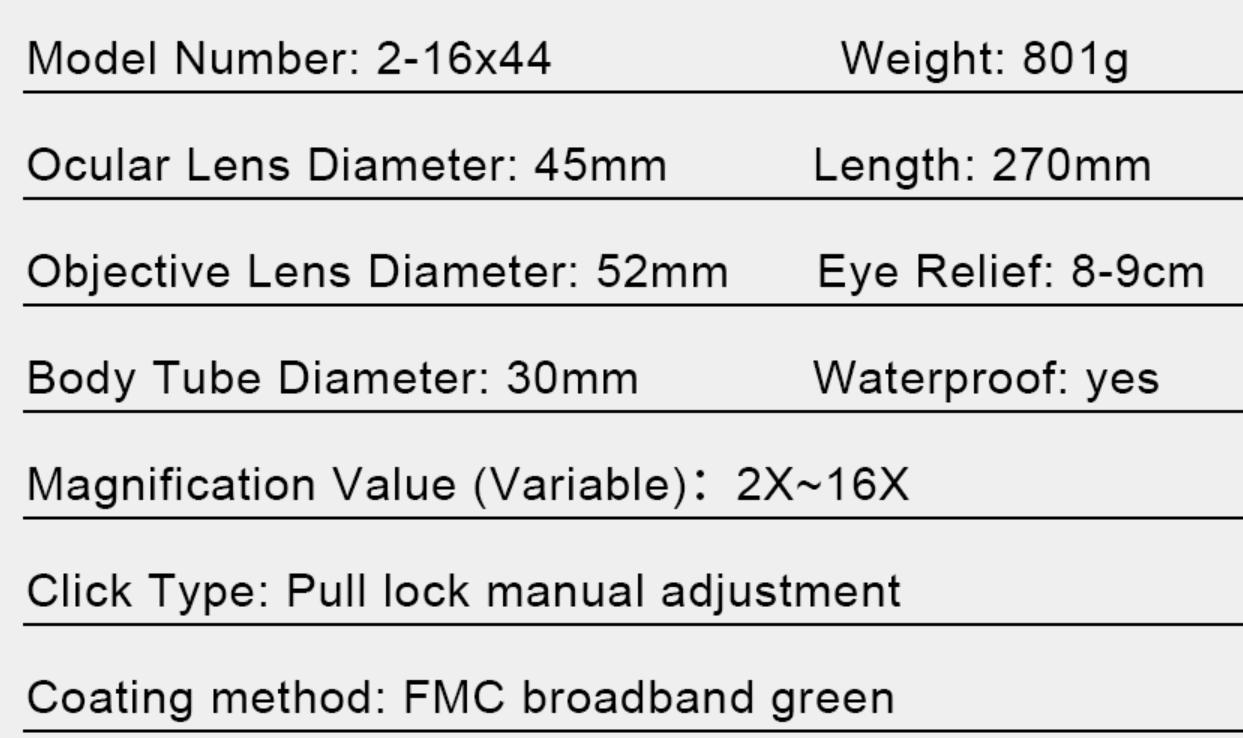
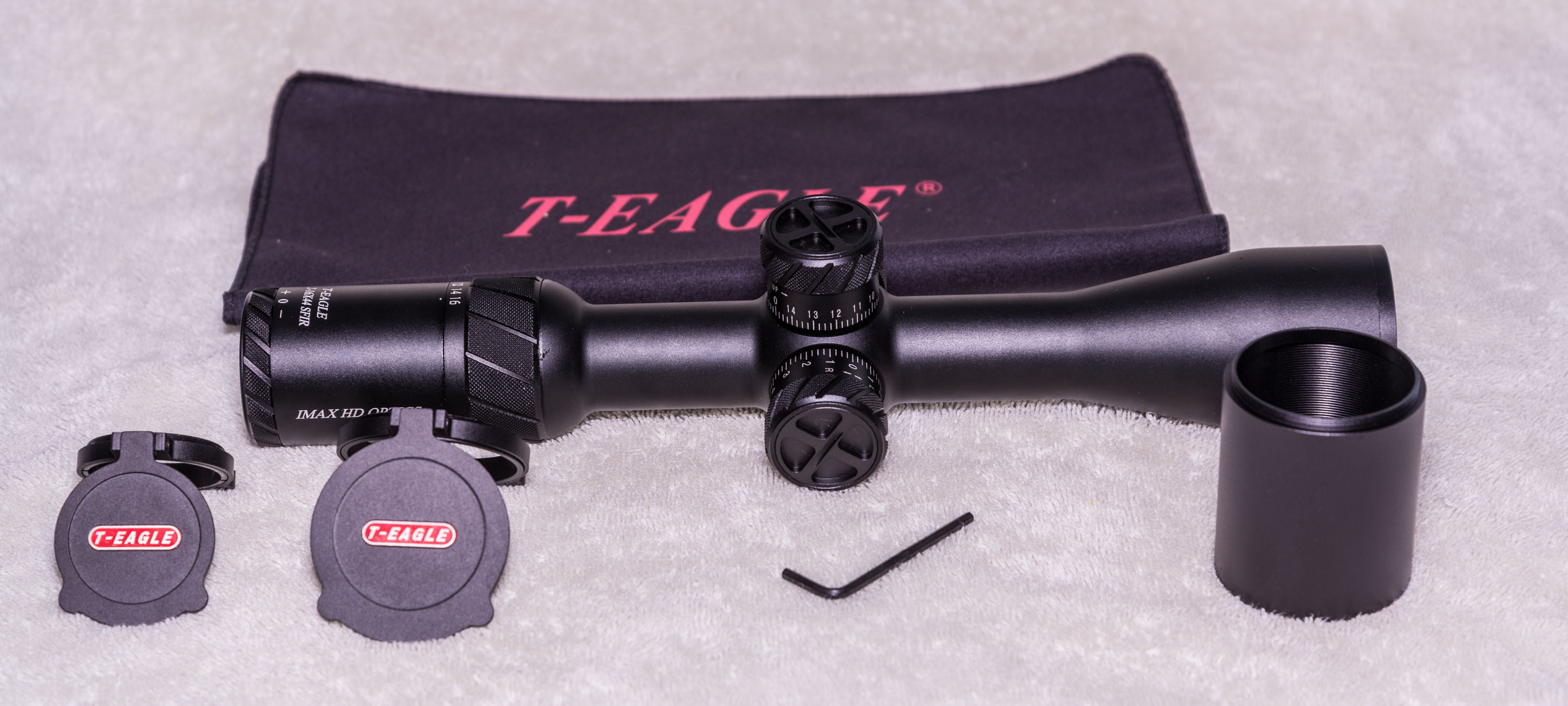
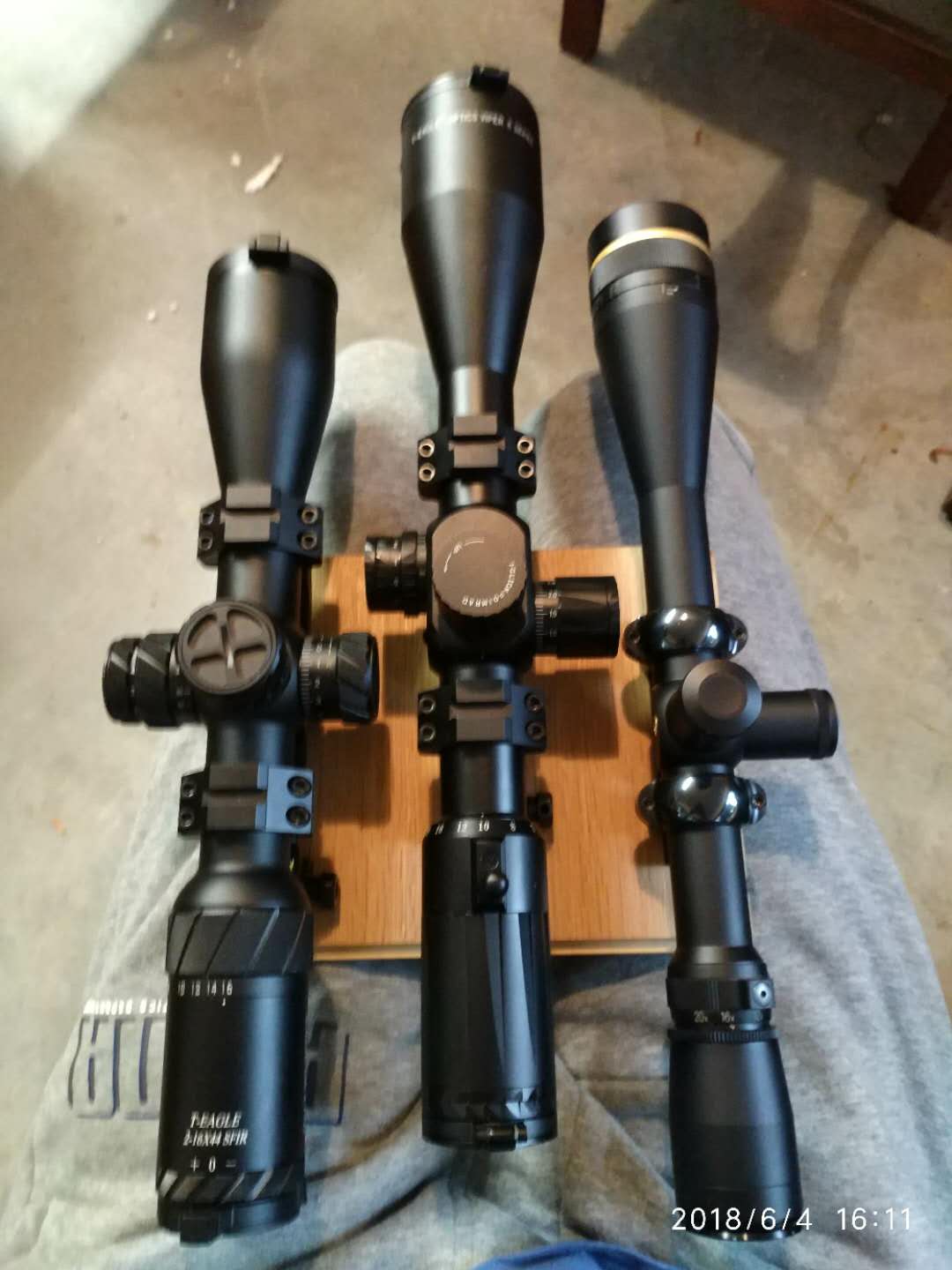
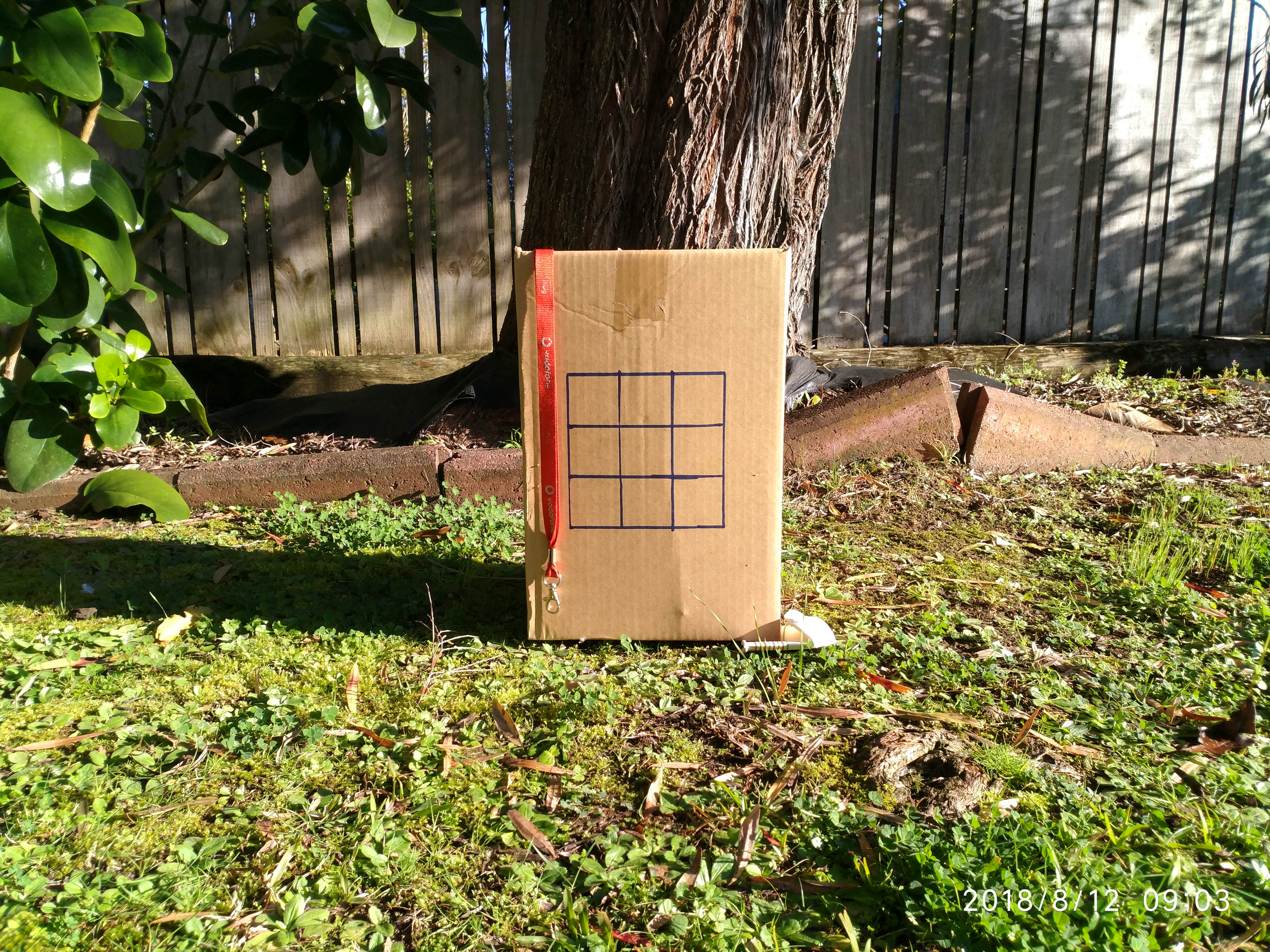
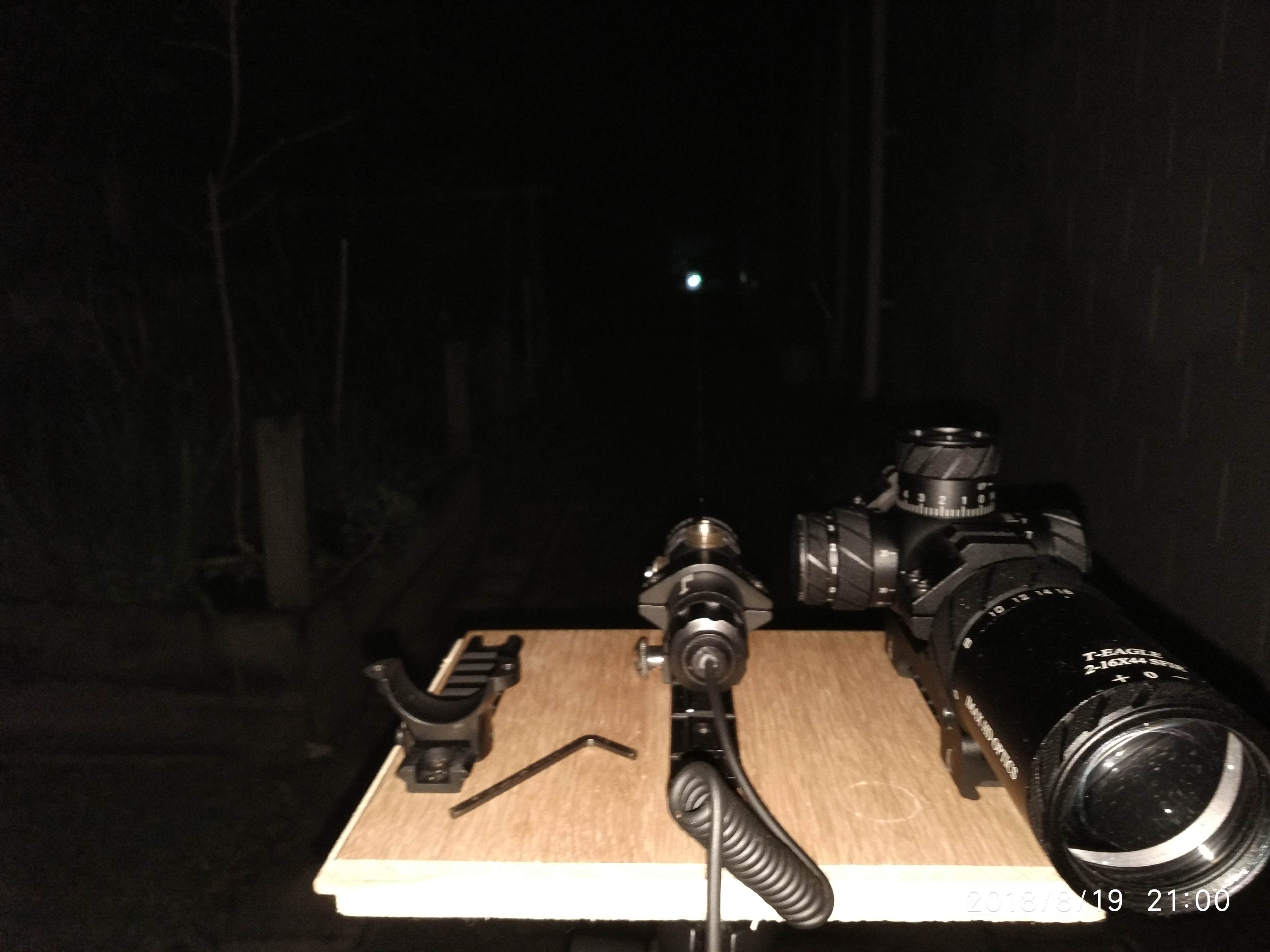
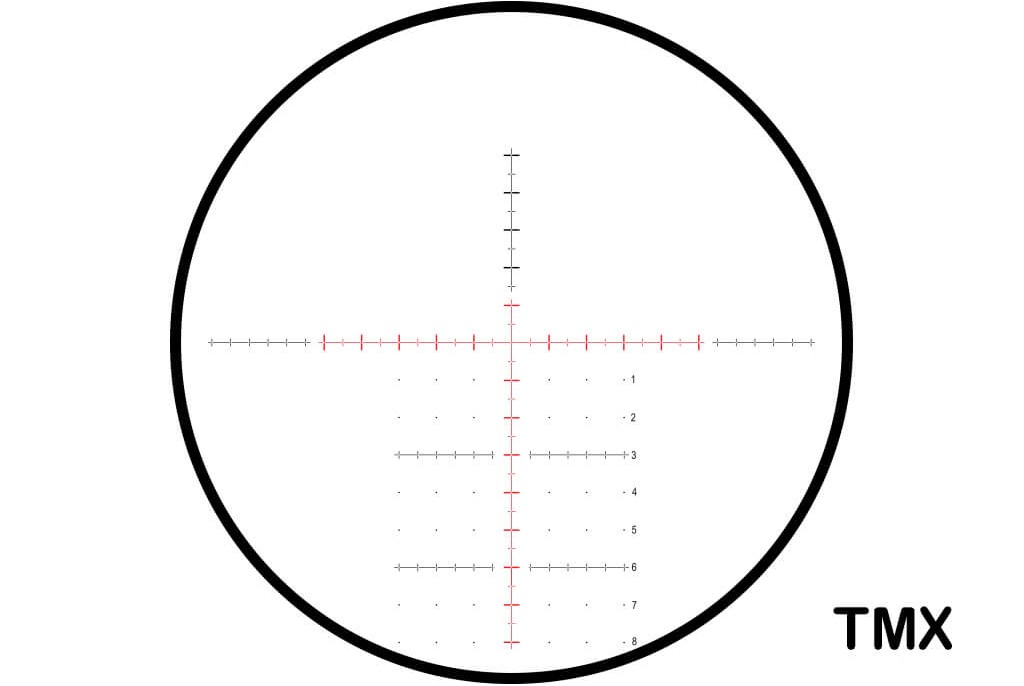
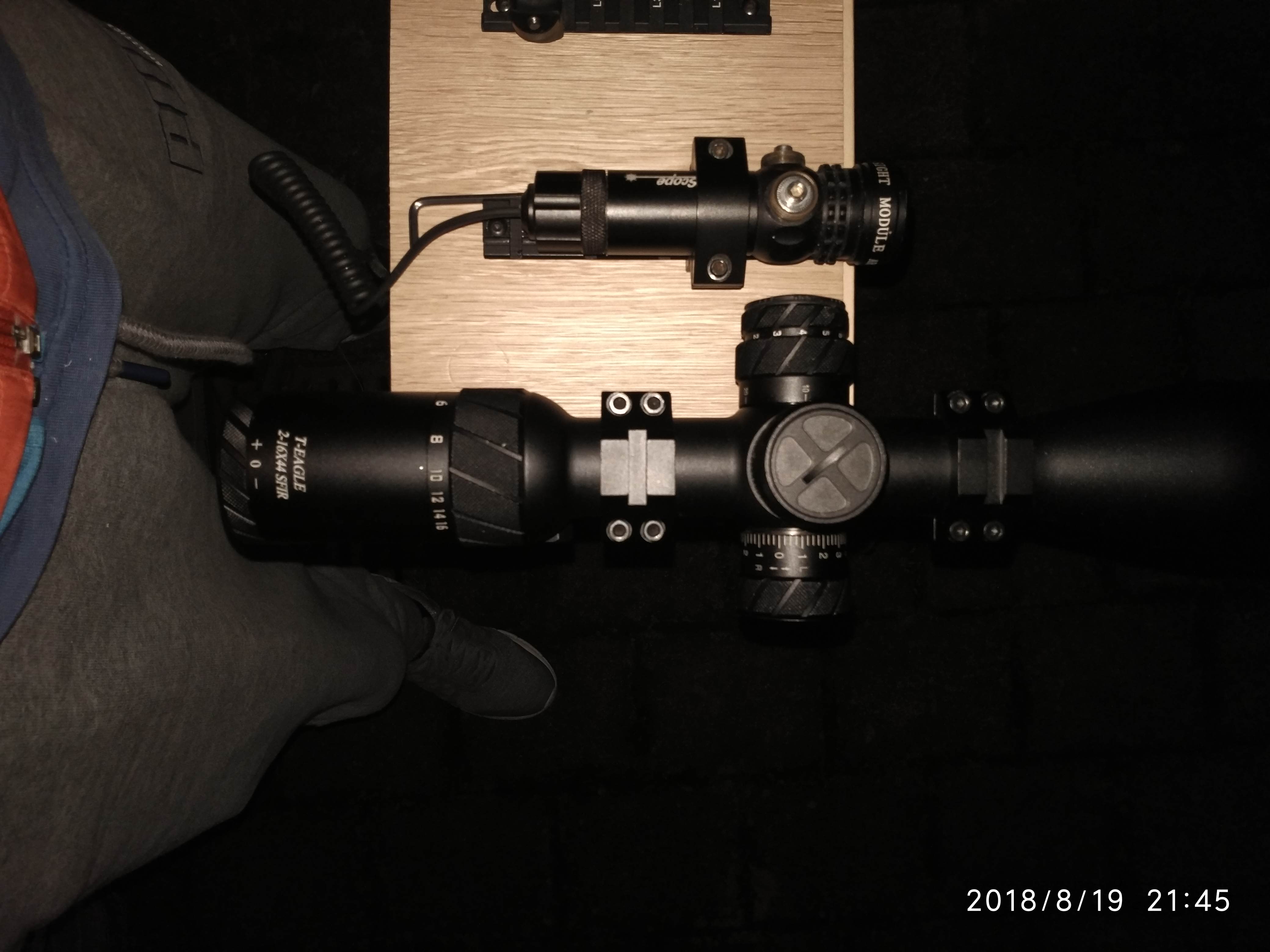




 Reply With Quote
Reply With Quote



Bookmarks